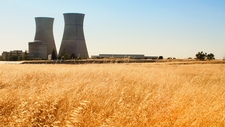Non-Renewable
Supporting

TEKS Objective
The student is expected to identify and classify Earth's renewable resources, including air, plants, water, and animals; and nonrenewable resources, including coal, oil, and natural gas; and the importance of conservation.
Essential Understanding
The students know that Earth consists of useful resources and its surface is constantly changing.
Science Background
Nonrenewable Energy Sources: Energy Kids (website) – Learn about energy sources, such as coal, oil and natural gas, which cannot be replenished in a short period of time.
Nonrenewable Energy Sources
Energy Kids, US Energy Information Agency, www.eia.gov
Where Fossil Fuels Come From: Energy Quest (website) – Coal, oil and natural gas were formed hundreds of millions of years ago. Learn more here.
Where Fossil Fuels Come From
Energy Quest, www.energyquest.ca.gov
Signature Lesson
Everything Comes from Something: National Geographic Expeditions (website) - Students learn to identify and classify renewable and nonrenewable resources, and they trace resources’ points of origin by constructing and analyzing a product map.
- Supporting Lessons
- Extensions
- Assessment Ideas
- Literature Connections
- Related
TEKS - Additional Resources
Supporting Lessons
Renewable & Nonrenewable Resources Lesson Plan: Penn State University (PDF) - Students describe a natural resource and identify renewable and nonrenewable resources in a given environment.
Natural Resources, Renewable vs. Nonrenewable: LessonPlansPage.com (website) - Explains the importance of natural resources and the characteristics of renewable and non-renewable resources.
Natural Resources, Renewable vs. Nonrenewable
by Cynthia Gaucin, LessonPlansPage.com
How Many Years to Disappear? K8Science.org (PDF) - In this introduction to a unit on recycling/solid waste disposal, students learn how long it takes for most buried trash to disappear.
Elaboration Lessons and Extensions
Renewable and Nonrenewable Natural Resources: California Department of Resources Recycling and Recovery (PDF) - Students learn the difference between renewable and nonrenewable natural resources, and discover that people in the United States use a many nonrenewable resources from other countries.
Assessment Ideas
- Assign each student a non-renewable resource, or allow students to choose their own.
- Have students draw pictures to show how this resource is processed into a finished product.
- Have each student write a short description of the process he or she has just illustrated, and include an explanation of why this resource is considered nonrenewable.
Literature Connections
Making Good Choices about Renewable Resources. Nagle, Jeanne (ISBN-10: 1435856023)
A Refreshing Look at Renewable Energy with Max Axiom, Super Scientist. Krohn, Katherine E. (ISBN-10: 1429639024)
Sustaining Our Natural Resources. Green, Jen (ISBN-10: 1410943283)
The Earth's Resources: Renewable and Non-Renewable. Harman, Rebecca (ISBN-10: 1403470618)
Additional Resources
Energy Kids: US Energy Information Administration (website) - Resources and activities on all aspects of energy.
Energy Kids
US Energy Information Administration, www.eia.gov/kids
TEKS Navigation
Grade 4
Need Assistance?
If you need help or have a question please use the links below to help resolve your problem.

Comments